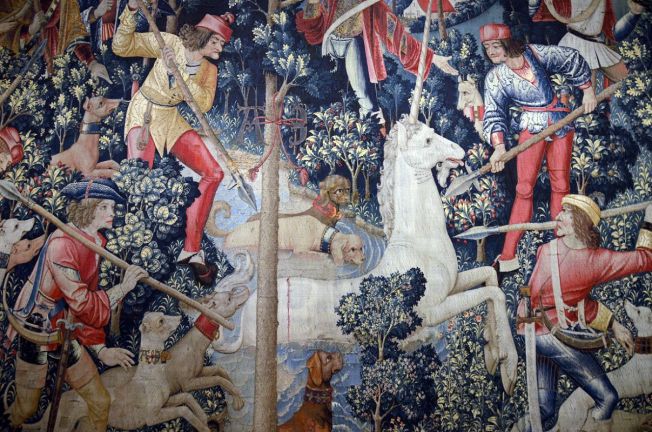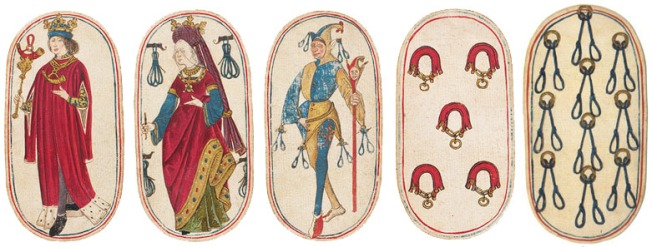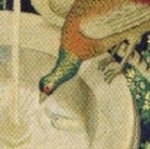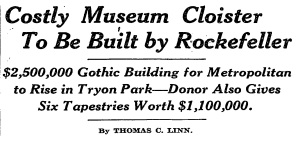The Cloisters has been on my ‘must-go’ list since I heard there was medieval conclave on the Manhattan’s cliffs. For 100 different reasons it took me a few years to get there. I made the trek up to Fort Tryon Park in Inwood this Saturday and spent the afternoon strolling through the medieval monastery. Surreal to say the least.
Brick-by-Brick.
The Cloisters, a branch of the Met, was constructed from remnants of five French abbeys disassembled and shipped to New York on the dime of John D. Rockefeller Jr.. From 1934 to 1938 they were reassembled in Fort Tyron Park. A park well worth the trip on its own. Upon completion, the Cloisters was filled with American sculptor George Grey Barnard’s extensive medieval art collection once housed in a nearby church.
The Star Attraction.
At the center of The Cloister’s collection are seven tapestries depicting the hunt, capture and rebirth of the mystical unicorn. The Unicorn Tapestries (1495-1505, South Netherlands) were donated to the museum by Rockefeller, himself an avid art collector.

The Unicorn Leaps out of the Stream (detail), ca. 1495–1505
South Netherlandish
12 ft. 1 in. x 14 ft. (368 x 427 cm)
FUN FACT:These awesome tapestries once hung on the walls of his West 54th Street home…clearly wallpaper just wouldn’t do for the Rocks.
Not much is known about the patron of the work, but many agree the tapestries are rich in Christian ideology with the unicorn representing Jesus Christ. The virgin and resurrection references are hard to ignore.
Hiding behind the symbolism and icons is a hidden picture puzzle to make Highlights proud. Millions of painstaking stitches created a complete world of wildlife, foliage and flowers from metallic, silk and wool threads.
The Met has a great interactive on the tremendous historic and artistic significance of the piece and the process used to create it. I’ll let the experts take it from here.
From Large to Small.
The Cloisters holds the only complete set of the playing cards from the era. The fifty two card deck, from Southern Netherlands (the Burgundian Territories to be exact), depict hunting tools as suits and pompously dressed face cards thought to be a satire of the ruling class of the day.
Unfortunately not much is known about the games played with these cards and the pristine condition of the set suggests they probably were not used at all. In the absence of fact, I’m going to say they had rousing games of ‘Go Fish’ and ‘Uno’ Over goblets of wine and turkey legs.

Set of Fifty-Two Playing Cards, ca. 1475; South Netherlandish (Burgundian Territories)
Pasteboard with pen and ink, tempera, applied gold and silver
each ca. 5 7/8 x 2 5/8 in. (13.8 x 7.1 cm)
I have barely scratched the surface of The Cloisters collection, but if volumes of books on the subject can’t do it justice neither can a blog post! Give me break. Take a ride up to the Cloisters and see for yourself. Speaking of…
Getting There.
By Subway/Bus
Take the A train to 190th Street and exit the station by elevator. Walk north along Margaret Corbin Drive through Fort Tyron Park and follow signs to the Cloisters.
Or take M4 bus directly to the last stop (Fort Tryon Park–The Cloisters)
By Car
Take Henry Hudson Parkway northbound to the first exit after George Washington Bridge (Fort Tryon Park—The Cloisters). This exit is only accessible from the northbound lane; if coming from the north, take Henry Hudson Parkway southbound to exit 14–15, make a U-turn, and travel north one mile to the exit marked Fort Tryon Park—The Cloisters.
99 Margaret Corbin Drive
Fort Tryon Park
New York, New York 10040
Information: 212-923-3700
TTY: 212-570-3828
Email: cloisters@metmuseum.org
Getting In.
March–October
Tuesday–Sunday: 9:30 a.m.–5:15 p.m.
November–February
Tuesday–Sunday: 9:30 a.m.–4:45 p.m.
Year-Round
Closed Monday (except Met Holiday Mondays), Thanksgiving Day, December 25, and January 1
Recommended
Adults $25
Seniors (65 and older) $17
Students $12
Members Free
Children under 12 (accompanied by an adult) Free




